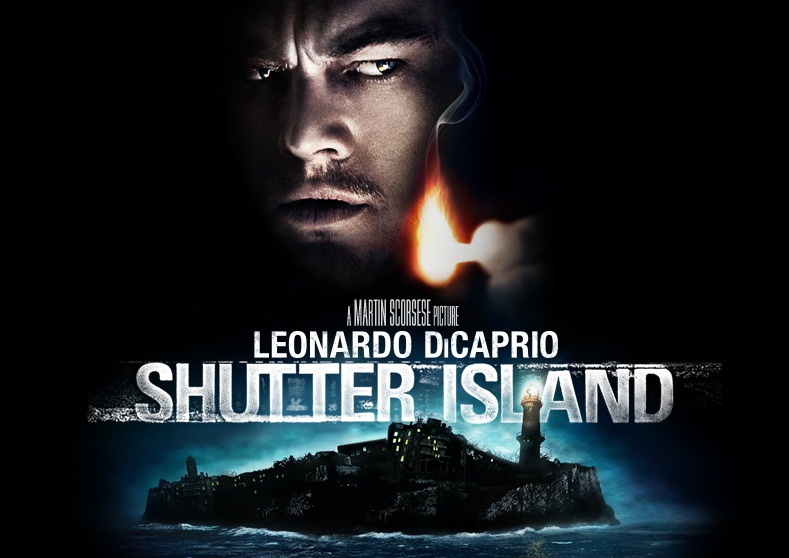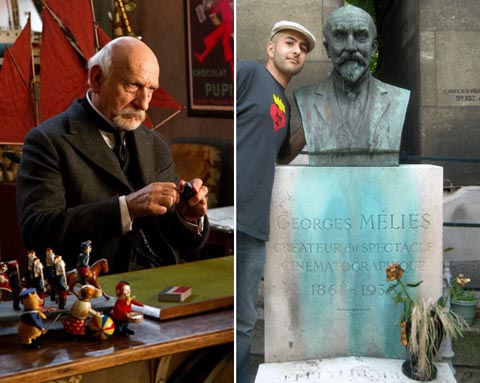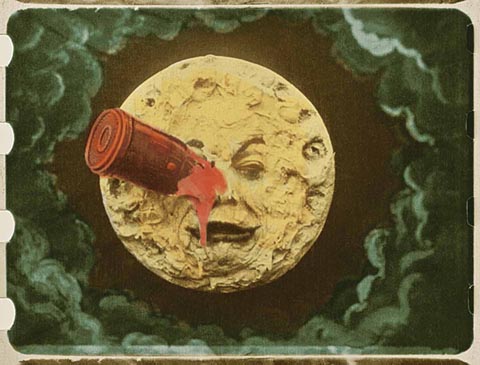Add a Comment
Viewing: Blog Posts Tagged with: Martin Scorsese, Most Recent at Top [Help]
Results 1 - 8 of 8
Blog: Galley Cat (Mediabistro) (Login to Add to MyJacketFlap)
JacketFlap tags: Awards, Libraries, Martin Scorsese, Oprah Winfrey, Maira Kalman, New York Public Library, Alan Bennett, Karl Ove Knausgaard, Gloria Steinem, Elie Wiesel, Judith A. Jamison, Add a tag
Blog: Galley Cat (Mediabistro) (Login to Add to MyJacketFlap)
JacketFlap tags: People, Adaptation, Martin Scorsese, Leonardo DiCaprio, Add a tag
Blog: OUPblog (Login to Add to MyJacketFlap)
JacketFlap tags: Avatar, Martin Scorsese, time, 3D, loneliness, Hugo, Alfred Hitchcock, james cameron, casino, Editor's Picks, *Featured, filmmaker, Dial M For Murder, TV & Film, Arts & Leisure, A Trip to the Moon, Cinema of Loneliness, Gangs of New York, Georges Méliès, history of film, Robert Kolker, Samuel Fuller, Shock Corridor, Shutter Island, The Aviator, The Departed, kolker, scorsese’s, scorsese, cameron’s, hugomovie, Add a tag
By Robert Kolker
“That’s that,” quoting Ace Rothstein at the end of Casino. I didn’t end the Martin Scorsese chapter on an optimistic note in the fourth edition of A Cinema of Loneliness. There is more than a hint that the Scorsese’s creative energies might be flagging.
My pessimism grew from the direction — or lack of direction — Scorsese’s films had taken over the past decade. I thought that the big productions of the 2000s — Gangs of New York, The Aviator, and The Departed — indicated some kind of flailing about for ideas. These films were not as lean and mean as the earlier gangster movies that worked at the speed of light and were deliriously comic in their basic brutality.

Copyright Paramount Pictures. Source: shutterisland.com.
Shutter Island seemed to seal the decline. An unofficial remake of Samuel Fuller’s 1963 Shock Corridor, the film could have been made, I thought, by anyone. It bore none of the hallmarks of Scorsese’s style and all of the hallmarks of an overwrought Hollywood gothic tale.
An obvious riposte to my pessimism is that I am not in a position to question an artist’s evolution. Scorsese no more than any other filmmaker is bound to repeat himself, and the great gangster and street films of his early period are a thing of the past. Artists change with time, and the results of that change may not be to everyone’s taste. At least not to mine.
With this in mind, I went to see Hugo with a lot of skepticism. Why would Scorsese make a film in 3D? The only reason I could come up with — aside from the fact that he might just wish to experiment with the old/new screen technology of the moment — is that Alfred Hitchcock made a 3D film when that format was first introduced in the 1950s: Dial M For Murder. Scorsese almost always roots his work in films of the past. His imagination is constructed of film. He is an amateur archivist, with a huge collection of movies that he watches continually. He has his cast and crew look at old movies when they are preparing a new one. His films become something of archival works themselves, full of allusions to their predecessors. But there is more to it than this.
I have resisted the recent 3D craze. I did go to see Avatar out of curiosity. James Cameron does not often repay curiosity. But something stood out in that film. The mise-en-scène of Cameron’s mythical world, with its floating vegetation in a liquid like atmosphere, reminded me of the underwater sequences of Georges Méliès’s A Trip to the Moon (Le voyage dans la lune, 1902). This magical film — Méliès was a magician as well as a filmmaker — was just one entry into his enormous filmography of fantasy filmmaking, his counter to the
Blog: Galley Cat (Mediabistro) (Login to Add to MyJacketFlap)
JacketFlap tags: Michael Lewis, Kathryn Stockett, Kaui Hart Hemmings, Brian Selznick, Awards, Adaptation, Martin Scorsese, Jonathan Safran Foer, Michael Morpurgo, Add a tag
Martin Scorsese‘s award winning adaptation of The Invention of Hugo Cabret by Brian Selznick has lead the Academy Award nominations this year, earning 11 Oscar nominations.
We’ve embedded the trailer above–what did you think of the film? Earlier this year, we wrote about Selznick’s personalized tours of the American Museum of Natural History.
The Best Picture nominees included a host of adapted novels. Below, we’ve linked to free samples of books adapted into Best Picture-nominated films.
New Career Opportunities Daily: The best jobs in media.
Add a CommentBlog: Cartoon Brew (Login to Add to MyJacketFlap)
JacketFlap tags: Chris Wedge, Georges Melies, ILM, 3-D, Feature Film, Martin Scorsese, Hugo, Serge Bromberg, Add a tag

Above right is a photo of me in Paris some years ago standing besides the grave of French filmmaker and visual fx pioneer Georges Méliès. I’d heard that Martin Scorsese’s new film Hugo incorporated the character of Méliès (portrayed by Ben Kingsley in the left-hand photo above), but I didn’t anticipate that the entire film would be essentially about him. More broadly, Hugo, which I saw in 3-D last night, is a celebration of filmmaking magic, the medium’s dreamlike possibilities, and true to Scorsese’s personal passions, the importance of film preservation. That Scorsese was able to package these themes into an entertaining family film is nothing short of miraculous.
The film’s strength is its visuals. I got a real kick out of the imagery, from the main setting of the train station and its cogs-and-gears innards to the intricate mechanics of the automaton who figured prominently in the film. The 1930s train station, which provides a warm and intriguing setting for the film, is almost a character in itself, but like most of the film’s characters, it suffers from broad caricature. In this case, it’s the cliched and tiresome American view of Paris, which was also seen in Woody Allen’s recent Midnight in Paris. The film’s freshest visual spectacles were the scenes that recreated Méliès’ films, appropriately so since the film was a celebration of his genius.
The 3-D must be mentioned. It was not offensive—an accomplishment in itself—but as usual, I’m left wondering how much it truly added. The opening shot of the film (was it all CG?), was contributed by ILM I think, and it was a fun use of 3-D in the roller coaster ride sense of the technology. In some of the early scenes, Scorsese showed motes of dust floating around the screen. The fact that I remember that, but not what was happening on the screen doesn’t speak well of the effect. To Scorsese’s credit, it appeared that he cut back on the 3-D trickery midway through the film, mostly recycling 3-D shots used earlier in the film or simply putting it aside in favor of more straightforward storytelling.
Final verdict: Hugo isn’t necessarily a classic, but it is a memorable children’s film with a refreshing lack of cynicism and lofty ideals.
A couple of animation-related notes:
* The film is an adaptation of Brian Selznick’s quasi-graphic novel The Invention of Hugo Cabret. A film based on the book was announced in May, 2008, and was slated to be the live-action directorial debut of Blue Sky co-founder and Ice Age director Chris Wedge. That version, for reasons unknown, was canned.
* A hand-tinted color version of Georges Méliès’s classic “A Trip to the Moon” (1902) was discovered in the 1990s and its restoration was recently completed by French film historian Serge Bromberg of Lobster Films. Bromberg is better known in the animation world as the artistic director of the Annecy International Animated Film Festival.

Cartoon Brew: Leading the Animation Conversation |
Add a CommentBlog: The Children's Book Review (Login to Add to MyJacketFlap)
JacketFlap tags: Books for Boys, Award Winners: Books with Honors, Ages Nine to Twelve: Books for Third Through Sixth Grade, Brain Twisters: Books that make you think, Reluctant Readers: Will be begging for more, Books into Movies, Featured Videos, Chapter Books, Brian Selznick, Martin Scorsese, Add a tag
The movie version of one of my favorite books of all-time, releases on November 23, 2011. Please read the book before seeing the movie—it’s outstanding!
Add this book to your collection: The Invention of Hugo Cabret by Brian Selznick
Have you read this book? Rate it:
Note: There is a rating embedded within this post, please visit this post to rate it.
©2011 The Childrens Book Review. All Rights Reserved.
. Add a CommentBlog: First Book (Login to Add to MyJacketFlap)
JacketFlap tags: Authors & Illustrators, Laura Ingalls Wilder, Brian Selznick, Martin Scorsese, Printz Award, The Invention of Hugo Cabret, Literacy Links and Articles, Caldecott Medal, Baby-Sitters Club, John Pinkney, libraries, Newbery Medal, Literacy, Little House on the Prairie, Books & Reading, Add a tag
An Interesting Approach to Exciting Youngsters About Reading
What better way to get kids interested in reading than to make them the star of their very own personalized book?
Mixtape: 10 Songs About Libraries and Librarians
Check out these fun songs about libraries and librarians, including artists such as Frank Zappa and Green Day. You can even listen in to discover why these songs made the list.
Little House on the Prairie Continues to Wow Audiences
Everyone’s beloved story is back with a new musical twist. Be sure to check out this new musical, based on Laura Ingalls Wilder’s treasured classic storyline.
Baby-Sitters Club: Life After 30!
The acclaimed teenage gang gets a new twist as we ask the question: Where are they now? From Kristy Thomas to Stacey McGill, these projections will certainly bring back cherished memories.
The Caldecott, Newbery and Printz book awards go to…
John Pinkney’s exceptional illustrations were awarded the Caldecott Medal for capturing the true spirit of a classic fable. The Newbery Medal as well as the Printz Award were also given to some special talent for excellence in both children’s literature and young adult literature.
Books to Film: Martin Scorsese Continues the Trend
With the release of some truly spectacular new films based on classic children’s books, Brian Selznick’s “The Invention of Hugo Cabret” appears to be next in line.
Blog: wheelerwrite (Login to Add to MyJacketFlap)
JacketFlap tags: music, film, Martin Scorsese, San Francisco, rock n roll, The Band, concert movie, Add a tag
The Last Waltz was a revolutionary documentary. It was the first concert movie shot in 35 mm, the record of a celebration of the Band’s last concert on the site of their first show as The Band. It is the visual evidence that more than thirty years ago Robbie Robertson, Levon Helm, Rick Danko, Garth Hudson and Richard Manuel had the good sense to go out on top. There are many examples of actors, politicians, athletes and rock stars who didn’t.
The movie itself, I hour, 37 minutes, was directed by Martin Scorsese. No matter what you think of Hollywood, his credentials as a director are undisputed. His list of credits, accomplishments and awards means that Scorsese is a serious director, not one to waste energy.
At the time, 1976, a time when the underground half of the 60's generation was realizing that the other half was following in the footsteps of their parents, embracing the values that their governments, their elders and betters, praised and promoted, Scorsese was in the middle of directing NEW YORK, NEW YORK, a huge, expensive Hollywood project. Unbeknownst to the New York, New York producer who would have had a heart attack if he’d known, Marty (as he is referred to by almost everyone in the movie) took a weekend off, filmed the concert at the Winterland Ballroom in San Francisco, put together the rest of it in a week and filmed three more songs on a Hollywood sound stage a few months later. It was edited and released in 1978. The sets, lighting, photography, sound and all the myriad details that go into movie creation were taken care of by hook or by crook, often improvised by world renowned experts in their fields. The project took on a life of its own. It was not made for profit and grew into an important cultural event.
Before Scorsese made The Last Waltz, there was WOODSTOCK (where he worked as an assistant director and editor and learned what not to do), GIMME SHELTER, SYMPATHY FOR THE DEVIL and an Elvis film, but no other single concert had been as carefully choreographed, as meticulously set and photographed as this. There were seven cameras shooting at times, each run by a professional and, in many cases, a world famous cinematographer. Bill Graham’s lawyers forced Scorsese’s assistant to negotiate each camera movement because he controlled the stage and insisted that nothing impair the sight lines of the live audience.
It is best to mention here that the DVD of The Last Waltz is available cheap at your local DVD purveyor. This one only cost ten Canadian dollars to buy, a great bargain for musicians, writers and anyone else interested in rock ‘n roll and the making of movies. The “Special Features” additions on the DVD contain a lot of comical and serious comments by the movie makers, Mac Rebenak, Ronnie Hawkins, Mavis Staples and the band members which can be listened to as the movie plays. As each band member, song and guest performer appears, someone talks about them.
The story of The Band’s creation and growth through sixteen years of living on the road unfolds through a series of interviews with band members interspersed among the songs, mostly answers to questions posed by Scorsese himself, questions provided by a professional screenwriter. Many of the answers are funny, some ironic, some poignant, but one feeling permeates the whole movie, a sort of good natured humour, an amused observation of the world at large and a sincere appreciation of the music.
The Band were aware that the odds of survival for such a long time in such a high risk lifestyle, were against them. Robbie Robertson says, at the end of the movie, “The road has taken some of the great ones” and “You can push your luck”.
Three of the Band’s songs were filmed on an MGM sound stage where Scorsese could control everything and was free to use a crane and a camera as in normal movies. The Weight, in which Pop and Mavis Staples sing verses and all four harmonize on the choruses with members of the band, Evangeline, which is filmed in stunning colour with Emmy Lou Harris doi


